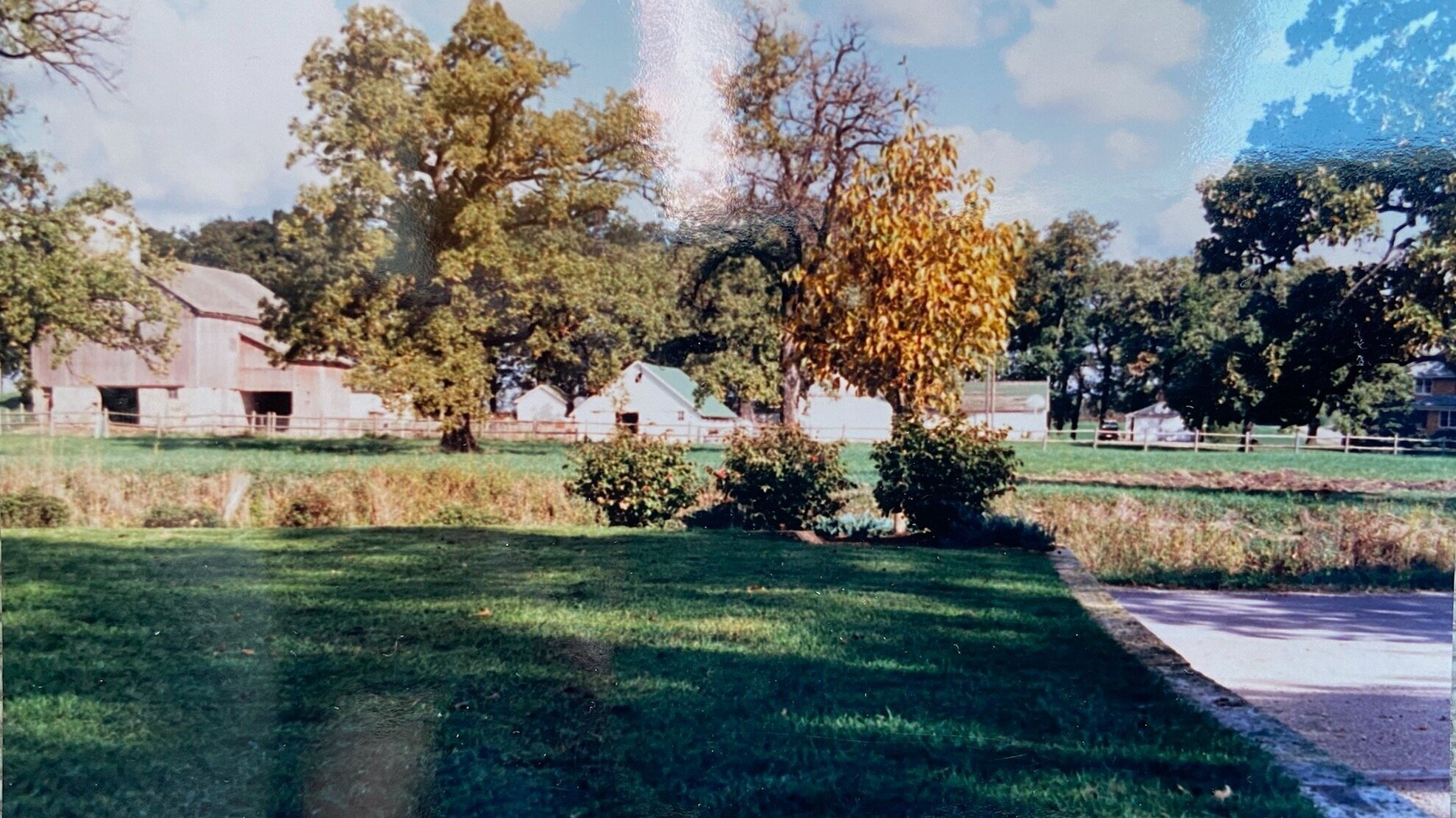Even chickens like to choose.
I grew up across the street from a small farm where I spent hours “helping” a patient farmer care for his animals. I scooped up piglets to cuddle, I brought hay to the cows, and I rubbed the heads of their calves. I remember how good I felt being close to those animals, and I fondly remember their smells, their sounds, and the way they felt.
Now I look back on that experience and wonder how comfortable the animals were with 11-year-old me. Sometime since then my perspective has shifted from what makes me feel good around animals, to what might make animals feel good around me. I understand that it is natural to want to be close to animals and that close connections can be beneficial to people and animals. I now think that if we ask what kinds of interactions work for animals as well as ourselves, then we can sometimes create experiences that work for all.
View from my front yard of the farm across the street. The photograph was taken around 1990, in the Western suburbs of Chicago.
Science tells us that providing animals with choices is one way to promote animal welfare. Autonomy feels good to us, and to other animals as well. Many zoos and parks have programs that allow visitors to interact with animals, and these involve varying degrees of animal choice.
Recently, my research team published a paper in the journal Animal Behavior & Cognition that measured the welfare of chickens in a zoo-based visitor interaction program. The program, launched before the pandemic, brought people close to chickens to take part in their care but gave the chickens control. A few zoo visitors at a time could approach one side of the chickens’ yard to feed the chickens by putting a short stick with a cup on the end through openings in their fence. Chickens could approach and feed out of the visitors’ cups, or they could continue going about their business in the chicken yard. There were feeders in their yard as well, no need to eat from the visitors’ cups if they preferred not to.
We wanted to find out whether chickens chose to feed from visitors, and whether offering this choice-based program supported good chicken welfare. Welfare is about how animals feel, but we often infer it through animal behavior. We designed the study so that we could measure how chicken behavior changed when the program was offered.
Photo by Brett Jordan on Unsplash
We paid close attention to signs that chickens were distressed or uncomfortable when visitors came up to the fence. Signs they were uncomfortable could be an increase in aggression toward other chickens or a drop in preening, for example. We found that chicken behavior did not change much at all when visitors had the opportunity to feed the chickens. And no news was good news for chicken welfare.
Chickens did come over and feed from the visitors’ cups. Chickens used the area near the visitors more when the program was happening, and visitors were never left without a chicken to feed. Chickens who participated didn’t eat more overall, they just swapped out their typical feeding from the yard feeders to feeding from the visitors’ cups.
However, not all chickens opted in to the program. Some chickens were regulars, others wanted little to do with it. The chickens showed their individual preferences, which revealed that providing the flock with the choice to opt in or out was key to keeping everyone comfortable.
These findings are similar to what we and other researchers repeatedly find across species — providing animals with choices and some level of control over their environment is a great way to support animal welfare. Of course this isn’t always possible given the diverse roles animals fill in our lives, but when my two daughters visit the farm animals nearby, I encourage them to hold out their hand and let animals come to them if they choose.
Curious to hear your reactions, thoughts and ideas — feel free to leave a comment below! Want to learn more about individual personalities in animals? Take a look at the post on dolphin personalities here.
Article
Ramont, M., Leahy, M. & Cronin, K.A. (2021). Domestic animal welfare at the zoo: The impact of an animal visitor interaction program on chickens. Animal Behavior and Cognition, 8(1), 1-14. https://doi.org/10.26451/abc.08.01.01.2021

